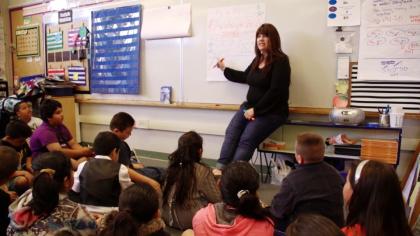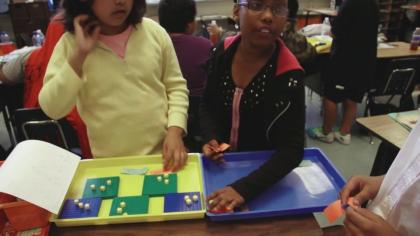Overview
This lesson helps you, the teacher, assess how well students understand the relationship between multiplication and division. You will be able to assess how well students are able to translate between the symbolic notation for multiplication and division and different representations of multiplication and division situations through, variously, contextual word problems, descriptions in words, equations/number sentences, number lines, and arrays.
As a result, you will be able to identify and help students who have difficulty in situations such as recognizing multiplicative relationships and transitioning from additive to multiplicative solution strategies; understanding and using the language of “equal groups of” and “equal parts of” to make sense of multiplication and division; translating among different representations; understanding the inverse relationship between multiplication and division; and understanding the meaning of the words factor, multiple, product, and quotient.
This formative re-engagement lesson, “Interpreting Multiplication & Division,” begins with a pre-assessment, “Baking Cookies,” that sets up the problems of distributing equal amounts of cookies among friends and using cookie sheets that hold rows of a given number of cookies.
The class begins with a number talk to discuss responses to the problem “5 x 14.” Students discuss their strategies and reasoning. Then students work individually on one of several possible math story or contextual word problems involving multiplication or division (Card Set A, available in the [lesson packet]. Students are asked to match their math story/contextual word problem (Card Set A) with an explanation in words of the mathematics (Card Set B).
After this activity, students who worked on the same problem then pair up and compare their thinking, translating among the different representations of multiplication and division.
Next, students find a Number Sentence/Equation (Card Set C) or a Number Line/Measurement Model (Card Set D) that matches their problem. Then pairs of students present their findings to their classmates and participate in a whole-group discussion.
The final step in this formative re-engagement lesson is the post-assessment, where students again take the “Baking Cookies” assessment to see their growth and reflect on what they have learned.
show more










